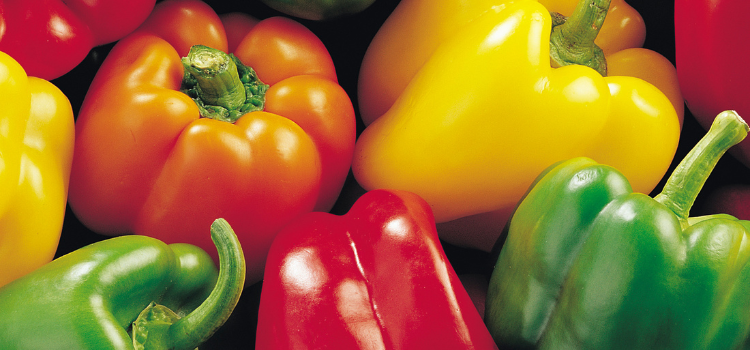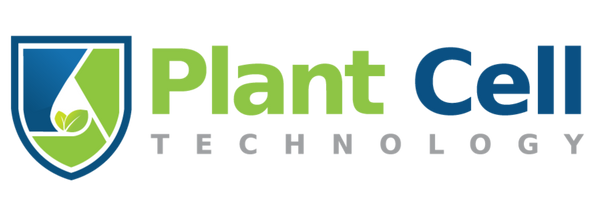
All About Capsicum Tissue Culture
As a content and community manager, I leverage my expertise in plant biotechnology, passion for tissue culture, and writing skills to create compelling articles, simplifying intricate scientific concepts, and address your inquiries. As a dedicated science communicator, I strive to spark curiosity and foster a love for science in my audience.


Introduction
What comes in red, yellow, green, and even purple and provides a burst of flavor when added to any meal? You guessed it—capsicum, also known as the pepper plant.
Whether it's topping a pizza, enjoyed in a fresh salad, or adding a kick to a favorite dish, these versatile veggies bring delightful flavor and vibrant color to any plate. Plus, capsicum is packed with essential vitamins A, C, and E, making it not only delicious but also incredibly beneficial for your health.
Now, imagine the convenience of growing capsicums right in your own backyard! While traditional methods of growing bell peppers are common, have you ever considered tissue culture?
Most people haven’t, as not many think of tissue culture when it comes to capsicum. But this is your sign to go for it! Tissue culture is a highly effective way to cultivate thousands of these vibrant, flavorful plants, whether for personal enjoyment or as part of a profitable business venture.
In this article, we'll explore the capsicum plant and guide you through the process of growing it using advanced tissue culture techniques.

Let’s Talk About Capsicum
Capsicum annuum, a member of the nightshade family (Solanaceae), is a widely cultivated plant prized for its flavorful and versatile fruits. From the mild sweetness of bell peppers to the fiery heat of chili peppers, Capsicum annuum offers a diverse range of tastes to suit every palate.
The fruits of Capsicum annuum, commonly known as peppers, are integral ingredients in countless cuisines worldwide. Whether enjoyed raw, cooked, pickled, roasted, or dehydrated, peppers add a unique flavor profile to dishes. From spicy curries and salsas to sweet and savory stir-fries, peppers have found their way into countless recipes.
Some varieties are specifically bred for their ornamental value rather than their culinary properties.

Beyond Flavor: Medicinal Benefits
Beyond their culinary applications, peppers also possess medicinal properties. They are rich in vitamins A, C, and E, as well as flavonoids, anthocyanins, and carotenoids. Additionally, peppers contain capsaicinoids, the compounds responsible for their spicy heat. Capsaicin has been studied for its potential benefits in treating various conditions, including arthritis and athlete's foot.
Procedure To Tissue Culture Capsicum
Here's the procedure to tissue culture capsicum, taken from the study of Hegde, V., Partap, P.S., & Yadav, R.C. (2017). In Vitro Regeneration of Capsicum (Capsicum annuum L.) from Cotyledon Explants. International Journal of Current Microbiology and Applied Sciences, 6(5), 225-237. Doi: http://dx.doi.org/10.20546/ijcmas.2017.605.026.
1. Seed Preparation and Germination:
- Select mature seeds from healthy pepper plants.
- Wash the seeds with a solution containing a surfactant like Tween-20 to remove surface impurities.
- Subject the seeds to the following germination treatment:
- Distilled water with 2mg/l GA3 (gibberellic acid) for 2 days at room temperature and 4°C.
- Surface sterilize the seeds with 0.1% mercuric chloride (HgCl2) solution for 5-6 minutes in a laminar airflow cabinet.
- Rinse the seeds thoroughly with sterile double-distilled water 4-5 times to remove all traces of HgCl2.

2. Explant Preparation and Inoculation:
- Germinate the surface-sterilized seeds on a half-strength MS basal medium solidified with agar (0.8%).
- Incubate the cultures at 25±2°C under a 16-hour light/8-hour dark photoperiod for seedling development.
- Use 5-7 day old seedlings as the source of explants.
- Harvest 0.4-0.6 cm cotyledon explants (seed leaves) from the seedlings.
3. Shoot Induction and Elongation:
- Inoculate the explants horizontally (on the abaxial side) onto fresh MS basal medium supplemented with:
- 3% sucrose (sugar source)
Different combinations and concentrations of plant growth regulators (to be determined for optimal shoot regeneration)
- Cytokinins such as BAP (Benzylaminopurine), kinetin, TDZ (Thidiazuron), and zeatin were used in the study for shoot induction. Zeatin (7.5 mg/l) and kinetin (7.5 mg/l) gave the best results in terms of shoot elongation and regeneration, especially when combined with 2.0 mg/l GA3 (Gibberellic Acid).
- TDZ (5.0 mg/l) along with 2.0 mg/l GA3 also promoted shoot regeneration but showed limited elongation and led to the formation of rosettes, requiring transfer to a medium without TDZ for proper shoot development.
- The medium supplemented with 7.5 mg/l zeatin and 2.0 mg/l GA3 resulted in the highest regeneration percentages—78.9% for hybrid Indra and 75.7% for hybrid Bharat.
- After shoot initiation, BAP at concentrations of 7.5–10 mg/l combined with 2.0 mg/l GA3 promoted shoot elongation. Higher concentrations of BAP (10 mg/l) were used in some cases for increased shoot multiplication, while kinetin at similar concentrations also supported elongation.
- Cytokinins like BAP and kinetin were superior to TDZ, which inhibited elongation when used in higher concentrations.
- Seal the Petri dishes containing the inoculated explants with parafilm strips to prevent contamination.
- Incubate the cultures in a controlled environment growth chamber at 25±2°C with a 16-hour light/8-hour dark photoperiod.
- Monitor the explants for shoot development.
4. Rooting and Acclimatization:
- Once well-developed shoots appear, separate them individually and transfer them to fresh MS medium supplemented with 0.5 mg/l IBA (indole-3-butyric acid) to promote root induction.
- Once the shoots develop roots, carefully remove the plantlets from the culture vessels without damaging the root systems.
- Rinse the plantlets thoroughly under running tap water to remove any residual culture medium clinging to the roots.
- Transfer the rooted plantlets to pots containing a sterile mixture of coco-peat and vermiculite (1:1 ratio).
- Provide additional nutrients by applying liquid MS basal medium (without sucrose) at 5-day intervals.
- Maintain high humidity around the plantlets by covering each pot with a perforated polyethylene bag.
- Keep the plantlets in the culture room at 25±2°C under a 16-hour light/8-hour dark photoperiod.
- After 6-7 days, gradually remove the polyethylene bags to allow the plantlets to acclimatize to lower humidity.
- After 14 days of acclimatization under laboratory conditions, transfer the plantlets to a shade net house and plant them in larger pots containing a mixture of soil, sand, and farmyard manure (1:1:1 ratio).
Note:
- This protocol provides a general framework for capsicum tissue culture. The optimal concentrations and combinations of plant growth regulators might need to be determined through experimentation.

Plant Cell Technology Is Your One-Stop-Shop For All Your Tissue Culture Needs
Looking to follow the protocol but are short on supplies? We’ve got you covered.
At Plant Cell Technology, we understand your ambitions and are here to be your trusted partner in creating a thriving home lab.
We understand that setting up a home lab and becoming skilled at the plant tissue culture technique can be challenging. However, with the right tools, knowledge, and support, you can cultivate success and unlock a world of possibilities.
How Plant Cell Technology Empowers You:
- Essential Supplies: Access a comprehensive range of high-quality media, agar, gelling agents, culture vessels, and more to ensure you have the right tools for every step.
- Expert Knowledge: Gain confidence through our informative resources:
- Comprehensive blog articles: Explore topics from basic principles to advanced techniques.
- Master Classes: Immerse yourself in in-depth sessions led by experienced instructors, gain valuable hands-on experience, and master advanced techniques.
- Consultation Services: Our experts will provide personalized advice and custom solutions, ensuring your home lab journey flourishes.
Community Connection: Join our vibrant community forum to connect with fellow enthusiasts, share experiences, and stay updated on the latest advancements.
Blog Categories
View by Level
Popular Blogs

The Advantage of Temporary Immersion Systems Over Solid Media
Introduction Is it finally time to transition away from agar? If you manage a commercial tissue culture lab or a...
Read More
How Samantha Bridges the Gap Between the Nursery and the Lab
The Introduction Building a tissue culture program from the ground up requires more than just scientific knowledge—it requires the grit...
Read MoreSubscribe to Our Newsletter









Join the conversation
Your email address will not be published. Required fields are marked